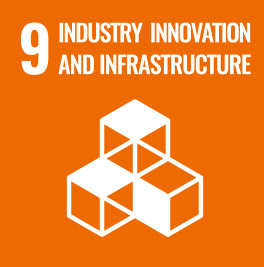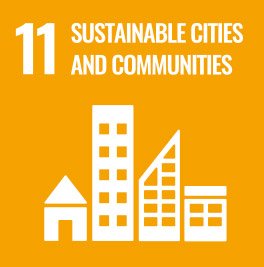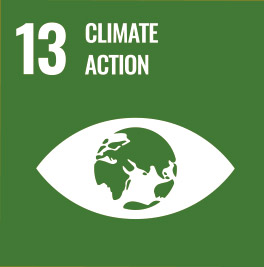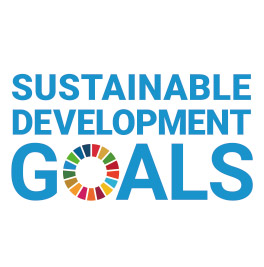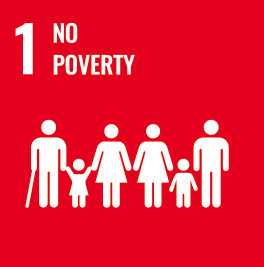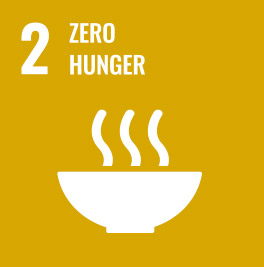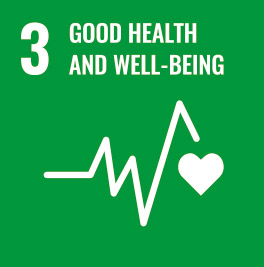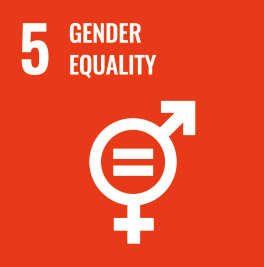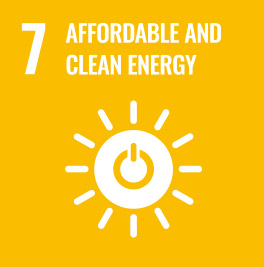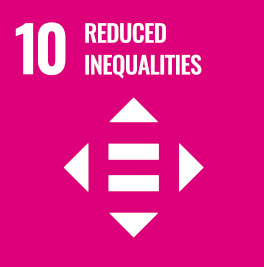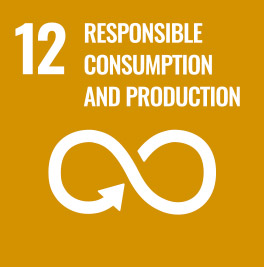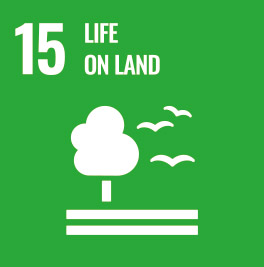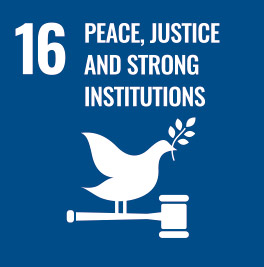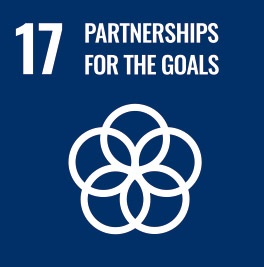SDG9
NCKU Architecture Team’s “Surge” Wins Silver at Sustainable Lighting Exhibition, Donated for Permanent Display
The National Cheng Kung University (NCKU) Architecture Team's work "Surge," with its outstanding light and shadow artistry, stood out among many entries in the "Sustainable Lighting Environment Creative Exhibition" lighting art installation competition held last year (2024) at the Taoyuan Chung Yuan Cultural and Creative Park. The exhibition aimed to promote the potential development of sustainable materials and the flourishing of aesthetic life in Taiwan. The team won the Silver Award, demonstrating innovative possibilities for the application of sustainable materials. After the exhibition concluded, the team donated the work to the park on March 17, allowing it to be permanently preserved and continuously displayed to the public.
Representing the donation ceremony, students Meng-Ze Du and Sheng-Yang Lin expressed that this donation is particularly meaningful for the "Surge" project. It not only showcases the low-carbon construction methods used—such as the selection of domestic timber, customized prefabrication, and dry assembly techniques—but also allows the work to take root locally through the donation, embodying a truly sustainable low-carbon architectural cycle.
The "Surge" project, led by Professor Yang-Ting Shen, involved 5 graduate and doctoral students: Meng-Ze Du, Lian-Kai Huang, Sheng-Yang Lin, Ren-Qian Jian, and Zurui Baariweng. The team created a low-carbon construction combined with technological art. To realize the continuous motion of the gray butterfly from egg hatching to flight, the team used robotic wood construction techniques to design a biomimetic curved wooden surface. During the day, the honeycomb-like biomimetic structure resembles a rigid shell, symbolizing the egg phase before hatching. At night, RGB light strips embedded within the structure transition in a breathing-like manner, transforming the piece into soft, light-driven lines, symbolizing the flapping wings after metamorphosis. This design embodies a layered transformation between structure and light, solidity and softness, stability and motion, day and night, infusing the entire piece with a rhythmic sense of life.
The team described the "Surge" installation as a "breathing" artwork that cleverly utilizes light to flow through the structure, symbolizing the instant of butterfly hatching. The work not only conveys the imagery of breathing, representing the unfolding of life, but also resonates with the competition’s deep concern for the environment.
Combining low-carbon construction and technological art posed 2 technical challenges: creating a biomimetic wooden curved surface using low-carbon timber and integrating lighting into the structure to produce a dynamic nighttime effect. To achieve the biomimetic curved surface, the team employed digital twin models to simulate the overall form and obtained the parameters for all positive and negative curved surfaces through sectional decomposition. Using digital manufacturing technologies (including robotic arms and CNC lathes), they customized joint components from 2x4 and 4x4 timbers, allowing each wooden frame unit to feature unique curved connections, forming the biomimetic egg shape when assembled. To tackle the technological art challenge, the team used programmable RGB light strips attached to parts of the wooden frame. This configuration allows the illuminated sections to depict wing patterns at night while diminishing the visibility of some structures, creating a contrast with the covered appearance during the day and achieving a dualistic transformation. By controlling the lighting colors and brightness durations through programming, the night scene emphasizes the fluidity and ambiguity of the structure’s lines, creating a visual effect resembling fluttering wings. Professor Yang-Ting Shen noted that the "Surge" project exemplifies the concept of Technology-empowered Design, showcasing the iterative process between design and technology to its fullest extent. Through this cycle, design transcends static conceptual expression, evolving into a dynamic practice deeply intertwined with technological advancements.
Notably, to embody the "low-carbon" spirit from a life cycle perspective and avoid generating architectural waste after the exhibition, the team proactively planned with the park for the work's continued use. Eventually, they coordinated with the organizers to donate the wooden structure, allowing it to remain as a resting pavilion space in the Taoyuan Chung Yuan Cultural and Creative Park, thereby perpetuating the concept of sustainable architectural recycling in a new form.
Representing the donation ceremony, students Meng-Ze Du and Sheng-Yang Lin expressed that this donation is particularly meaningful for the "Surge" project. It not only showcases the low-carbon construction methods used—such as the selection of domestic timber, customized prefabrication, and dry assembly techniques—but also allows the work to take root locally through the donation, embodying a truly sustainable low-carbon architectural cycle.
The "Surge" project, led by Professor Yang-Ting Shen, involved 5 graduate and doctoral students: Meng-Ze Du, Lian-Kai Huang, Sheng-Yang Lin, Ren-Qian Jian, and Zurui Baariweng. The team created a low-carbon construction combined with technological art. To realize the continuous motion of the gray butterfly from egg hatching to flight, the team used robotic wood construction techniques to design a biomimetic curved wooden surface. During the day, the honeycomb-like biomimetic structure resembles a rigid shell, symbolizing the egg phase before hatching. At night, RGB light strips embedded within the structure transition in a breathing-like manner, transforming the piece into soft, light-driven lines, symbolizing the flapping wings after metamorphosis. This design embodies a layered transformation between structure and light, solidity and softness, stability and motion, day and night, infusing the entire piece with a rhythmic sense of life.
The team described the "Surge" installation as a "breathing" artwork that cleverly utilizes light to flow through the structure, symbolizing the instant of butterfly hatching. The work not only conveys the imagery of breathing, representing the unfolding of life, but also resonates with the competition’s deep concern for the environment.
Combining low-carbon construction and technological art posed 2 technical challenges: creating a biomimetic wooden curved surface using low-carbon timber and integrating lighting into the structure to produce a dynamic nighttime effect. To achieve the biomimetic curved surface, the team employed digital twin models to simulate the overall form and obtained the parameters for all positive and negative curved surfaces through sectional decomposition. Using digital manufacturing technologies (including robotic arms and CNC lathes), they customized joint components from 2x4 and 4x4 timbers, allowing each wooden frame unit to feature unique curved connections, forming the biomimetic egg shape when assembled. To tackle the technological art challenge, the team used programmable RGB light strips attached to parts of the wooden frame. This configuration allows the illuminated sections to depict wing patterns at night while diminishing the visibility of some structures, creating a contrast with the covered appearance during the day and achieving a dualistic transformation. By controlling the lighting colors and brightness durations through programming, the night scene emphasizes the fluidity and ambiguity of the structure’s lines, creating a visual effect resembling fluttering wings. Professor Yang-Ting Shen noted that the "Surge" project exemplifies the concept of Technology-empowered Design, showcasing the iterative process between design and technology to its fullest extent. Through this cycle, design transcends static conceptual expression, evolving into a dynamic practice deeply intertwined with technological advancements.
Notably, to embody the "low-carbon" spirit from a life cycle perspective and avoid generating architectural waste after the exhibition, the team proactively planned with the park for the work's continued use. Eventually, they coordinated with the organizers to donate the wooden structure, allowing it to remain as a resting pavilion space in the Taoyuan Chung Yuan Cultural and Creative Park, thereby perpetuating the concept of sustainable architectural recycling in a new form.
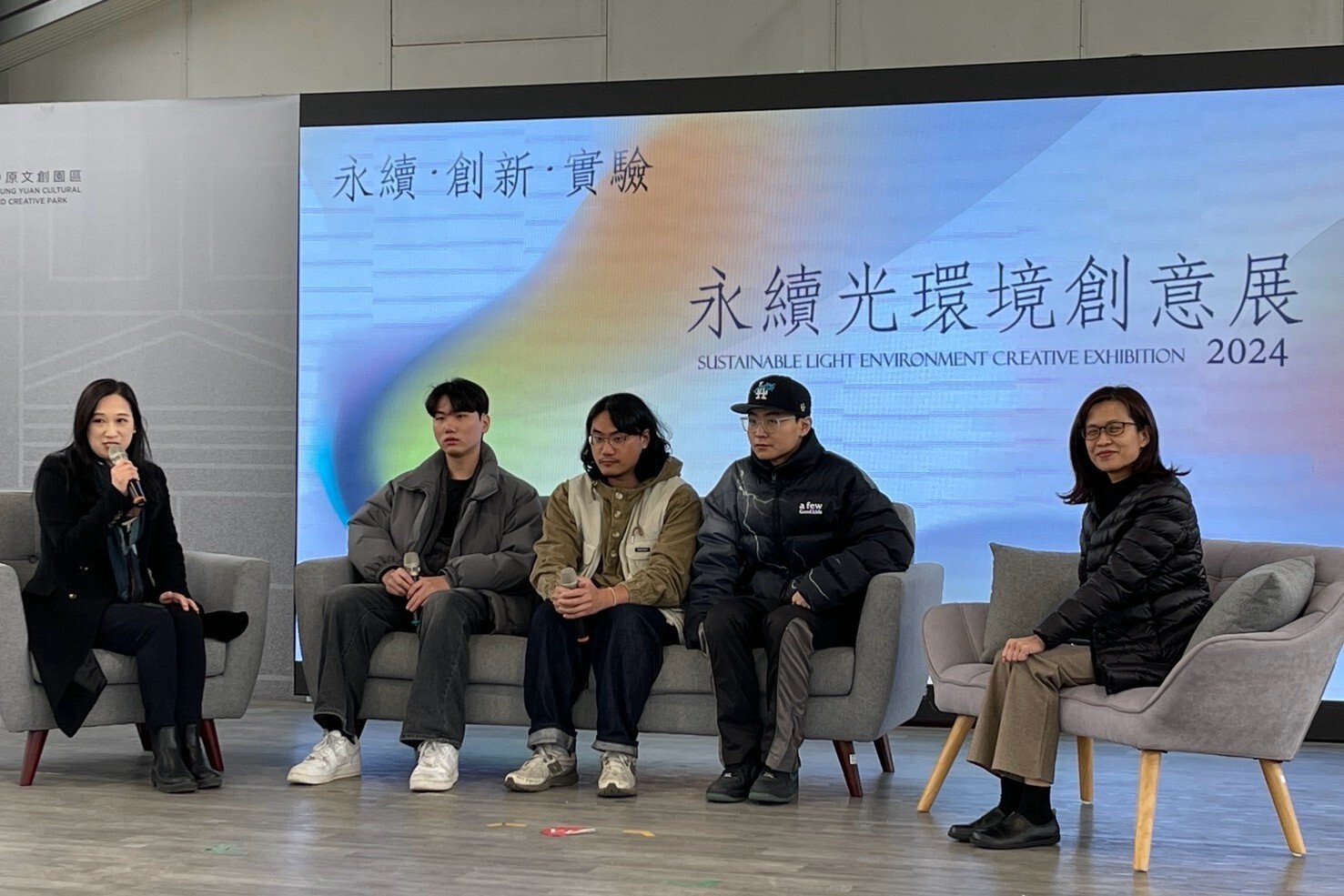
Meng-Ze Du (third from the left) and Sheng-Yang Lin (fourth from the left) represented their team in participating in the "Sustainable Lighting Environment Creative Exhibition" donation event and interviews
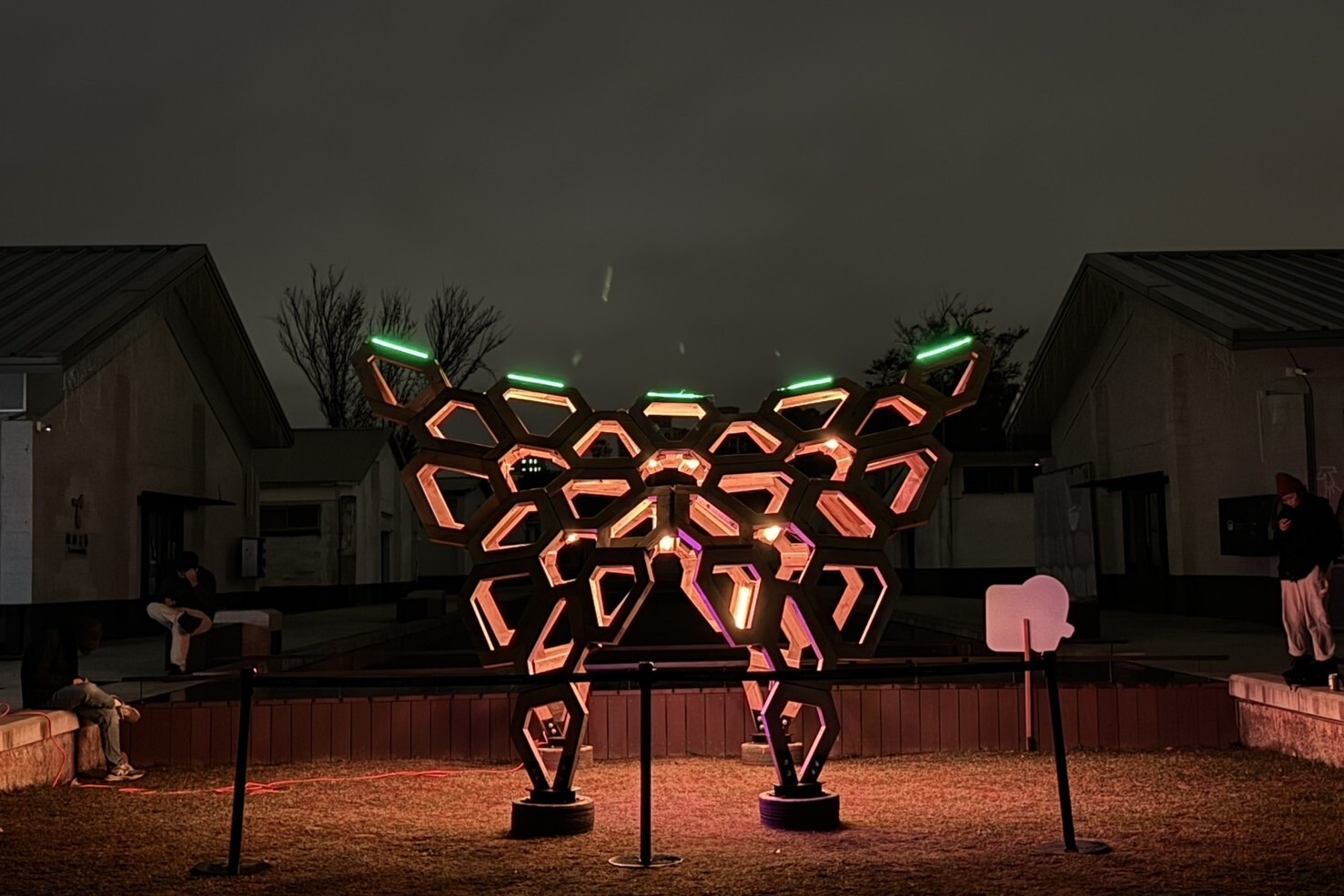
The NCKU Architecture Team won the Silver Award at the "Sustainable Lighting Environment Creative Exhibition" with their work titled "Surge"
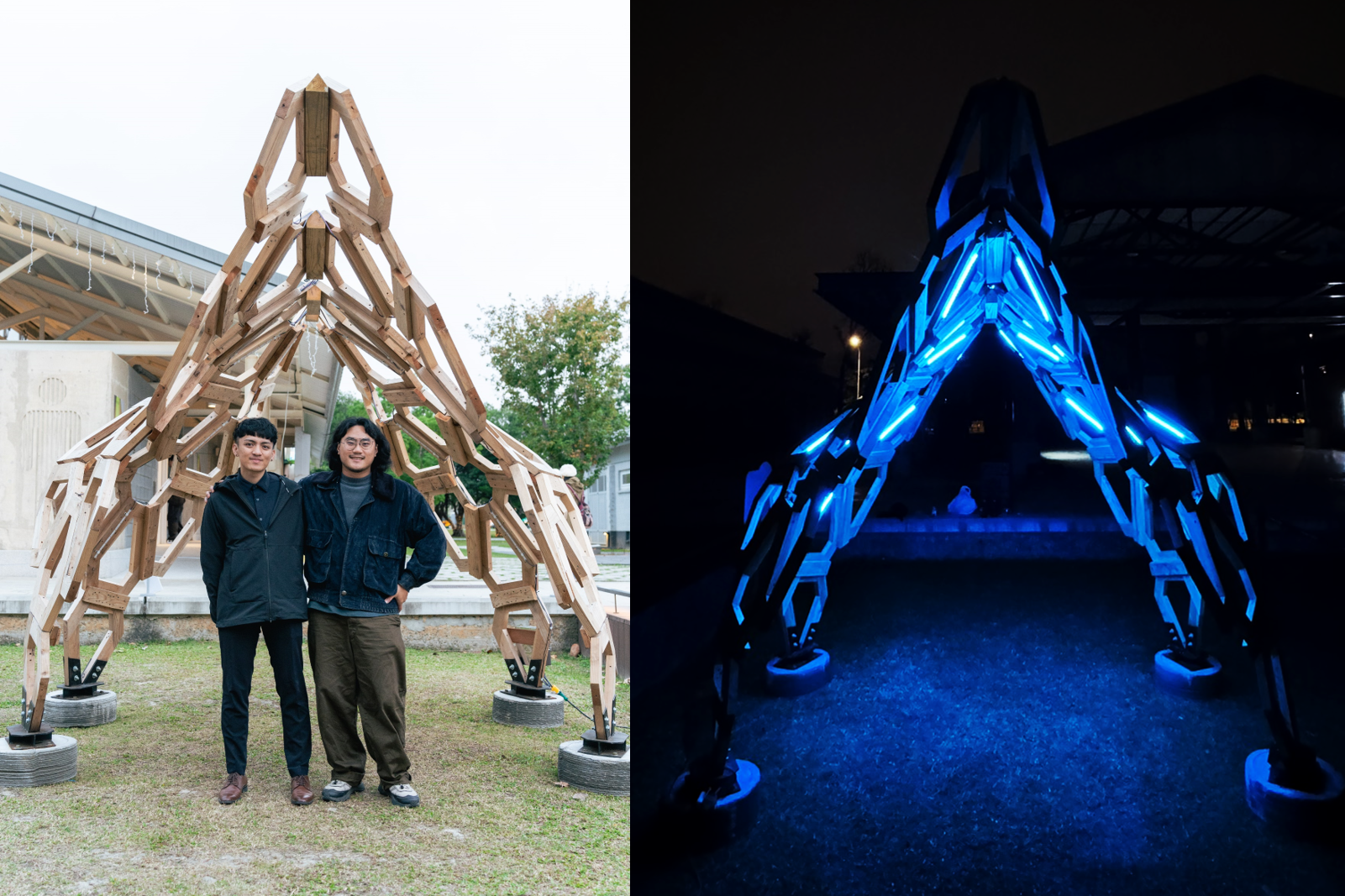
The work "Surge" presents completely different states and meanings during the day and at night

The design team achieved the technological and artistic effect of butterfly dance through programmed control of lighting colors and brightness duration

SDG9Professor Hsun-Ping Hsieh Receives ACM KDD 2024 Test of Time Award in Data Science and AI
View more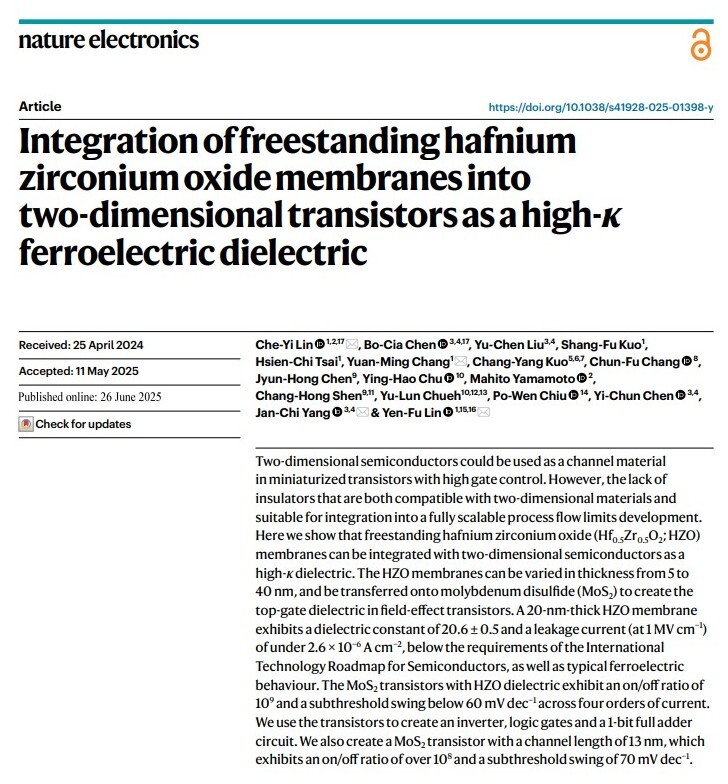
SDG9NCKU and NCHU Collaborate with International Research Teams to Develop the World's First Suspended Ferroelectric 2D Transistor
View more


